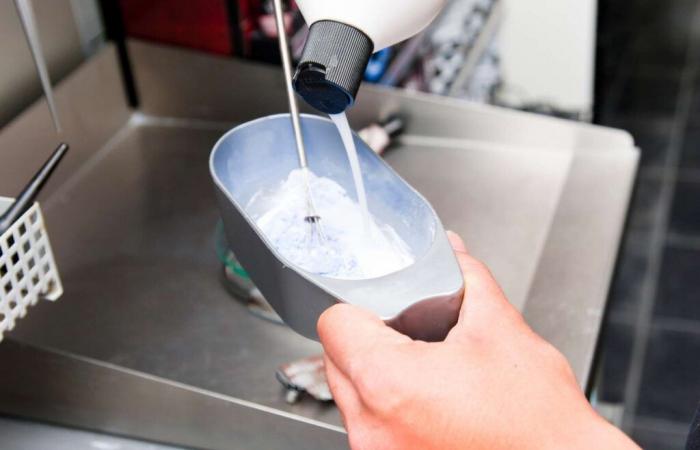Hobs, faithful companions of our culinary adventures, undergo the repeated assault of cooked foods and fats. Over time, they lose their original luster, affecting not only their appearance, but potentially their performance as well. Fortunately, a simple and economical solution exists: the hydrogen peroxidehydrogen peroxide. This product, known mainly for its properties antisepticsantisepticscontains remarkable cleaning power. Let’s discover together how this compound can transform your worn cooking plates into sparkling surfaces, ready to accommodate your next culinary creations.
The secret of hydrogen peroxide
Hydrogen peroxide, chemical formula H2O2is an exciting compound. Its molecular structure, made up of two atomsatoms of hydrogen and two oxygen atoms, gives it unique properties. When it comes into contact with materialsmaterials organic, such as food residue on your stovetop, an effervescent reaction occurs.
This chemical reactionchemical reaction is the key to its effectiveness:
- she breaks down the moleculesmolecules food residue;
- it facilitates the removal of encrusted fats;
- it oxidizes stubborn stains, making them easier to remove.
The excitement observed is not just an interesting visual spectacle; This is a sign that hydrogen peroxide is actively cleaning your cooktops. This mechanical action, combined with the chemical effect, makes it possible to dislodge even the most stubborn dirt without resorting to aggressive products or excessive scrubbing.
A winning duo: hydrogen peroxide and baking soda
If hydrogen peroxide is effective alone, its combination with baking soda creates a synergysynergy powerful cleanser. THE bicarbonatebicarbonate of weldingweldingor hydrogen carbonate sodiumsodium (NaHCO3), is a slightly alkaline compound that acts as a mild abrasive. When mixed with hydrogen peroxide, it forms a paste pH optimalpH optimal to dissolve grease and cooked residue.
Here is a comparative table of the properties of these two ingredients:
| Property | Hydrogen peroxide | Baking soda |
| Main action | Oxidizing | Mild abrasive |
| pH | Slightly acidacid | Slightly alkaline |
| Effect on fats | Decomposition | Emulsification |
This combination allows for deep cleaning while preserving theintegrityintegrity of your cooking plates. On the other hand, it is necessary to note that certain materials, such asaluminiumaluminium or non-stick coatings, may be sensitive to this method. In these cases, the use of hydrogen peroxide alone is recommended.
Instructions for sparkling plates
To bring your hobs back to life, follow these simple steps:
- Prepare the solution: mix equal parts hydrogen peroxide and baking soda to make a thick paste.
- Apply generously: spread the paste over the entire surface of your plates, paying particular attention to the most dirty areas.
- Leave to act: allow the mixture to rest for about two hours to allow the ingredients to penetrate and break down the residue.
- Scrub gently: use a non-abrasive sponge or soft brush to remove softened dirt.
- Rinse thoroughly: remove all traces of the mixture with clean water.
This method, in addition to being effective, has the advantage of being ecological and economical. It avoids the use of aggressive chemicals, thus preserving the environment and your health. Additionally, these ingredients are usually already present in most homes, making them a practical and accessible solution for everyone.
Thanks to this simple technique, your cooking plates will regain their former glory, ready to welcome your future culinary masterpieces. Don’t forget to repeat the operation regularly to keep your utensils in perfect condition and prolong their life. durationduration of life.






